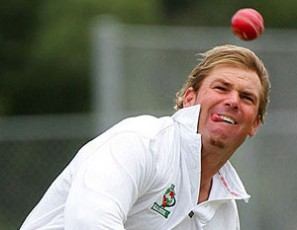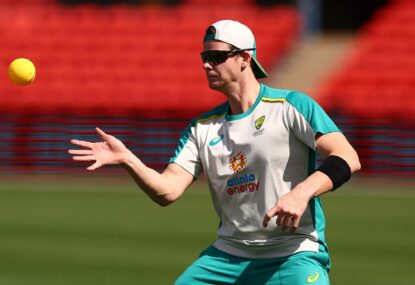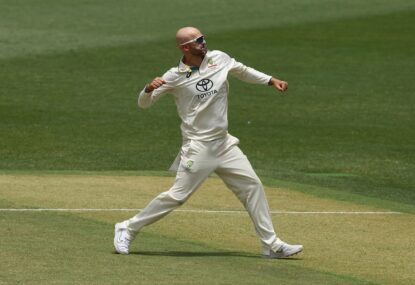Whenever a player shows signs of potential, we are all quick to call them the next Ricky Ponting or Shane Warne. You would think this is a great compliment, but too often it has been a dark hovering cloud of expectation.
I clearly remember when Brad Haddin scored 169 against New Zealand in the summer of 2008-2009 at the Adelaide Oval.
The cries of the desperate fans and media called him ‘the next Adam Gilchrist’. Haddin, still in his first year of Test cricket, must have felt pretty good.
The years have gone by though, and Haddin being the next Gilchrist is far from anyone’s imagination. Instead, the cries from the fans are calling for him being dropped from the team.
It was always going to be a tough job for Haddin, following a once in a generation – dare I say lifetime – player isn’t easy.
But it’s always going to be tough for wicketkeepers, out of an entire country of cricket lovers, there is only one keeper playing in the starting XI.
Phil Jaques is another player I would like to bring up. He was offered to play for England because he had a British passport but rejected England’s offer because he claimed “his heart said Australia.”
Finally, after working hard in both County and Australian domestic cricket, he made his debut against a tough South African outfit on Boxing Day of 2005, in front of 80,000 eager Melbournian cricket fans.
No pressure Phil.
However, Phil is a victim of TNG (The Next Great). Phil was supposed to be the next Matthew Hayden, Phil only played 11 Test matches
Another man whose name is Phil fell victim to TNG – Phil Hughes that is. Like Jaques, he was supposed to be the next Hayden, and didn’t we believe it.
Making his debut in early 2009 against the South Africans, he made two centuries on the tour of South Africa, including a spectacular 160 at Durban.
All of a sudden, Hughes was the talk of the cricketing world.
However, Phil was soon found out to struggle with the short ball and was targeted by the English bowlers in the 2009 Ashes series and the 2010-2011 series.
Phil was dropped from the Australian team a season later, after Australia’s shock loss to the Kiwis in late 2011.
Hughes was left in the cricketing wilderness that is domestic cricket. He changed his style of batting and state, then started to dominate the Sheffield Shield.
He made his way into the Australian team again, filling in the gap left by Ricky Ponting’s retirement.
Playing against the less-than-impressive Test team of Sri Lanka, Hughes scored 86, falling only 14 runs away from an incredible come back ton.
Hughes continued batting well against the Sri Lankans but another form slump soon followed when the Australian team toured India in a four Test match series.
Hughes scored 6, 0, 19, 0, 2, 69, 45 and 6 as Australia were whitewashed 4-0 for the first time since 1977.
Hughes was named as part of the touring side for the 2013 Ashes series in England and played in the first Test. He and surprise debutant Ashton Agar made a world record 11th wicket partnership of 163, with Hughes scoring 81 not out.
But as usual, he struggled to keep his place in the team after a run of low scores and was dropped in the third Test.
Despite being only 24, he has a lot to work on if he has any chance of playing for Australia again.
Now for the next unlucky cricketer, Jackson Bird.
Bird made his debut for Australia on Boxing Day 2012. I loved him, I loved his bowling action, his run up and even his haircut. He reminded me a lot of Glenn McGrath.
Unfortunately, almost every expert, arm chair critic and fan in the country thought so too.
Jackson got man of the match in the next Test and was selected for the disastrous tour of India, but was sent back to Australia due to a stress fracture in his back.
He was selected in the fourth Ashes Test at Chester-lee-street, which Australia lost and Jackson was out injured with another stress fracture.
Jackson though has made a nice recovery and is back bowling in the nets and could be playing again later on this summer.
Another reason why the upcoming stars of tomorrow will never be like the past legends of yesterday is personality.
I could safely say no one in world cricket will ever be like Warnie.
Shane was not only in the papers because of his ability to spin Australia to victory, but also because of his bad habit of getting into trouble off the field.
We have all seen how many spinners have been given the precious baggy green cap since Warne’s retirement, but I sometimes feel the selectors were picking players that most looked like Warnie rather than on how well they could get the ball to turn.
Steven Smith was apparently going to be the next leg spinning sensation but has turned more into a batsman rather than a bowler.
Stuart McGill was the closest thing Australia got to Shane Warne. Unfortunately for Stuart, being a leg spin bowler while Warnie was in his peak meant he only had limited chances to show off his incredible talent.
Currently, The dark TNG cloud is hovering over George Bailey; George has been called the next Michael Hussey.
I can see why people want to believe he is, but just because you make your international debut in your 30s, that doesn’t mean you are going to be the next Hussey.
In conclusion, there never will be another Gilchrist. There will never be another Bradman. And there will never be another Warne.
But there will be another talented young player. Whatever his name may be, he will no doubt become yet another victim of TNG.
My final message to the cricket loving fans is, just let them be them.






































































































